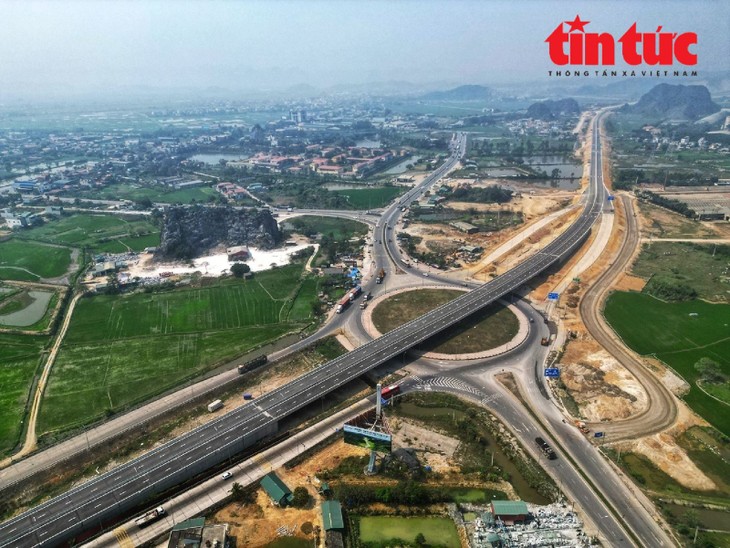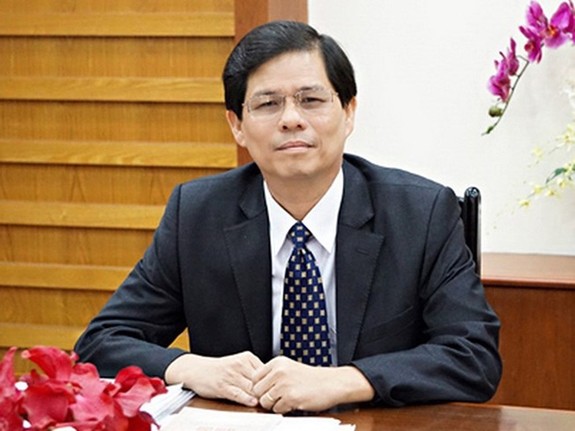(VOVWORLD) -The 13th National Party Congress Resolution defined that building a synchronous infrastructure system is one of three strategic breakthroughs. Building transport infrastructure is considered Vietnam’s top priority to promote socio-economic development, improve national competitiveness, and reduce poverty.
 Mai Son National Highway 45 seen from above (Photo: VNA) Mai Son National Highway 45 seen from above (Photo: VNA) |
Late last month, two component projects of the first phase of the North-South expressway – the Mai Son National Highway 45 connecting Ninh Binh and Thanh Hoa and the Phan Thiet-Dầu Giây expressway - were put into use.
The second phase, with a total length of 724km, is under way and expected to be completed by 2025.
Once the North-South expressway is completed, it will connect the northern region to Vietnam’s southernmost locality and drive the development of other economic sectors, including tourism and services.
 Nguyen Tan Tuan is Chairman of Khanh Hoa province’s People’s Committee (Photo: qdnd.vn) Nguyen Tan Tuan is Chairman of Khanh Hoa province’s People’s Committee (Photo: qdnd.vn) |
Nguyen Tan Tuan, Chairman of the Khanh Hoa province People’s Committee, said, “Qualified companies have been selected to execute the project. We will only provide raw materials, per the Prime Minister’s direction.”
Nguyen Minh Khiem, Director General of Corporation 319 of the Ministry of Defense, said that when executing key projects of the transport sector, the company is always aware of protecting its brand and ensuring the quality of the work.
“I’m very proud that the Corporation has been entrusted with many projects of the Ministry of Transport and the localities. This time, we must pay close attention to quality and progress to make the North-South expressway project a success,” said Khiem.
Pham Van Khoi, President of the Phuong Thanh Company, said that the Government, ministries, sectors, and localities create the best possible conditions for completing the projects.
He said although the transportation sector faces many difficulties, it also has many advantages, namely, capital and incentives provided by the Party, State and provinces to realize the second phase of the expressway project and create a driving force for economic development.
“Once the land clearance is done, we’ll gather all the resources needed to complete project as soon as possible,” said Khoi.
The highways along the coast, running through forests or barren, rocky land, have brought new development to many areas, says Tran Chung, Chairman of the Vietnam Association of Road Traffic Investors.
“The contractors do these highway projects not only for economic reasons, but also for social and cultural reasons,” said Chung.
He took the Dong Dang-Tra Linh highway for example. It’ll be difficult for the company to build the highway, if it’s only for financial reasons.
Dong Dang in Lang Son and Tra Linh in Cao Bang are home to the Vietnamese revolution, a 350km national border, a world heritage site, and ethnic minority groups. Those are the reasons to accept the project. Another example is the highway to Ca Mau to help Vietnam develop a maritime economy.
Chung noted, “The State should promulgate more policies to facilitate investor participation in such highway projects and create economic, cultural, and social spillover to national sustainable development.”
Four components of 11 North-South expressway projects (phase 1) will be completed and put into operation in the second half of this year.
National Highway 45-Nghi Son road is scheduled to be completed in August, Nghi Sơn–Dien Chau in July, Nha Trang-Cam Lam in September, and the My Thuan 2 bridge in December.
The projects will help Vietnam realize the goal of having 5,000 km of highway by 2030.